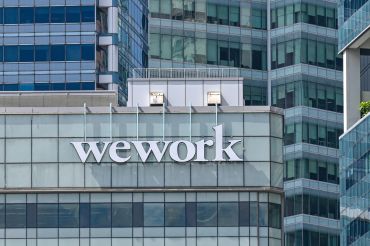In last week’s column, I wrote about interest rates and their impact on the commercial real estate investment sales market. Concrete Thoughts often produces calls and emails with questions and comments from readers but, last week, I received many more than usual. This was clearly a hot topic and one that requires additional examination.
In last week’s column, we looked at GDP growth, job creation and real median incomes and how mediocre these metrics have been since the recovery began. I used several statistics about the economic recovery going back to 2010. Some readers felt this unfairly discounted more recent activity and overstated the likelihood of interest rates staying low longer than expected, particularly if we look at the consensus among economists and the rhetoric coming out of the Fed’s meeting minutes. Clearly, recent activity, notably on the jobs front, has been more positive.
February’s jobs report showed that U.S. payrolls grew at a 295,000 pace, marking the 12th month in a row with over 200,000 jobs created. Growth has averaged about 275,000 during this period, the most in any 12-month period going back to 2000. On this news, the equities market saw a selloff and 10-year treasuries saw yields increase by 6 percent. Further, the unemployment rate dropped to 5.5 percent, within the range considered to be “full employment” by Fed policy makers. Within the range of 5.2 percent to 5.5 percent is where they feel the economy can operate without incurring too much inflation. This data does indeed make a strong case for the Fed to increase interest rates sooner than later.
However, notwithstanding this data, there remains significant slack in the job market. The unemployment rate itself is not really representative of all those who want to work full time. Many Americans are working part time and many have given up looking for a job. Wage growth has been weak and without upward pressure on wages, inflation is not likely. The February report showed that wages grew by a mere 2 percent since February 2013. The disconnect between robust hiring and wages is likely due to many of those new jobs being of the lower paying type in the retail and restaurant sectors. Wage growth has been the missing link in this recovery.
A lack of increased productivity is another possible explanation for this. If we eliminate the farm and government sectors, the growth in worker productivity has averaged 1.3 percent since the recovery began. This is the weakest increase since the 1970s. In the 4Q14 the Department of Labor reported that productivity did not increase at all from 4Q13.
So, will the Fed raise rates soon or not? One thing is for sure: rates can’t get any lower. The best we can hope for, from a purely real estate-centric perspective, is inertia in interest rate policy. Even if rates go up slowly, they will only go in one direction (up). How markets will be impacted by this is anyone’s guess. However, there are likely to be positives and negatives.
On the positive side, the “tax” savers have been paying for years will go away, rewarding them for saving again. Banks should be incentivized to lend money to a broader landscape of borrowers to take advantage of higher rates. While the higher rates will make it more costly to purchase a home, many more potential borrowers will actually be able to borrow which could help the housing market. Higher interest rates will exert downward pressure on bond values, driving existing capital out of bonds and into equities and real estate.
On the downside, rising rates will increase the cost of using lines of credit and obtaining short-term funding for small and mid-sized businesses. They will also increase costs for consumers using credit cards and purchasing automobiles. Lastly, and most importantly for this audience, increasing rates will exert downward pressure on commercial real estate prices, unless underlying fundamentals are enhanced enough to drive up net operating incomes, making up for increased capitalization rates.
The more macro considerations leave us scratching our heads. We have never come off zero interest rates before so there are no textbook models to help us interpret the likely results. Can this economy grow with increasing rates? As the U.S. and rest of the world edges off zero, the dollar will strengthen further. As the dollar strengthens, foreign investment in condos here will likely slow. Tourism will be negatively impacted as it becomes more expensive for foreigners to visit and it becomes less costly for Americans to travel abroad. Will the Fed take action to weaken the dollar? There are so many questions that we’ll only be able to answer with the passage of time.


